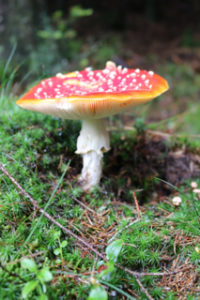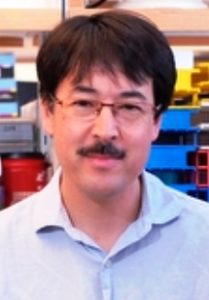
(Courtesy, Francis Martin)
Clark University Professor David Hibbett, in collaboration with the French National Institute for Agricultural Research (INRA) and the U.S. Department of Energy Joint Genome Institute (DOE JGI), is working to understand the genetic basis of ;how plants and fungi grow and function together, which may provide clues to how these symbiotic relationships help plants survive in changing environments.
Hibbett is a co-lead author of “Convergent losses of decay mechanisms and rapid turnover of symbiosis genes in mycorrhizal mutualists,” a study published today (Feb. 23) in the research journal Nature Genetics.

To understand the basis for fungal symbiotic relationships with plants, the team from DOE JGI, INRA, and Clark University conducted the first broad, comparative phylogenomic analysis of mycorrhizal fungi, drawing on 49 fungal genomes, 18 of which were sequenced for this study.
“This study illustrates how genomics is both transforming and integrating all biological disciplines, including evolutionary biology (which is my field) and functional molecular biology,” Hibbett said. “At Clark, we are fortunate to have recently hired two faculty members with interests in functional and evolutionary genomics, Robert Drewell and John Gibbons, who are bringing a genomic perspective to our teaching and research efforts in Biology.”
* Click here to read “Retracing the Roots of Fungal Symbioses: Understanding how plants and fungi developed symbiotic relationships,” the announcement published in PhysOrg.news, provided by the DOE/Joint Genome Institute (JGI) .
“This work also demonstrates the importance of team approaches and collaboration to address big-picture scientific questions; this study had 51 primary authors, from more than ten nations, including three from Clark,” Hibbett added. The other Clark authors include former doctoral student Dimitrios Floudas and post-doctoral researcher Laszlo Nagy. Floudas graduated in December 2014 and is now a post-doctoral fellow at the University of Lund, Sweden, while Nagy has taken a position as a Research Scientist at the Biological Research Centre in Szeged, Hungary.
Igor Grigoriev, leader of the DOE JGI team, also pointed out, “This first large-scale study of mycorrhizal genomics is also the first step in both broader and deeper exploration of mycorrhizal diversity, their interactions with host plans, and roles in forest ecosystems using genomics tools, which are the focus areas for the JGI Fungal Genomics Program.”
